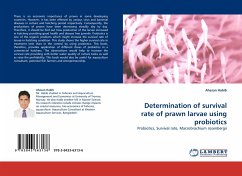The haplodiploid sex-determination system determines the sex of the offspring of many hymenopterans (bees, ants, and wasps), spider mites, coleopterans (bark beetles) and rotifers. In this system, sex is determined by the number of sets of chromosomes an individual receives. An offspring formed from the union of a sperm and an egg develops as a female, and an unfertilized egg develops as a male. This means that the males have half the number of chromosomes that a female has, and are haploid. This system produces a number of peculiarities; chief among these is that a male has no father and cannot have sons, but he has a grandfather and can have grandsons. Haplodiploidy is postulated as having paved the way for the evolution of eusociality in the Hymenoptera and a few other taxa although this is a matter of considerable debate.
Bitte wählen Sie Ihr Anliegen aus.
Rechnungen
Retourenschein anfordern
Bestellstatus
Storno








